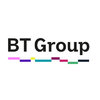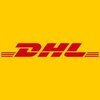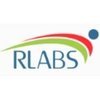Top 50 Virtualization Interview Questions and Answers
Updated 16 Jul 2025

Asked in Brillio

Q. What is the difference between virtualization and container orchestration?
Virtualization creates multiple virtual machines on a single physical machine, while container orchestration manages multiple containers on a single operating system instance.
Virtualization creates a layer of abstraction between the hardware and the ...read more

Asked in NetApp

Q. Explain VMware’s virtualization on a multicore machine.
VMware's virtualization on a multicore machine allows for efficient utilization of resources and improved performance.
VMware's virtualization technology enables the creation of multiple virtual machines (VMs) on a single multicore machine.
Each VM can...read more

Asked in Corporate Infotech

Q. What is virtualization and why do we need it?
Virtualization is the creation of a virtual version of something, such as an operating system, server, storage device, or network resource.
Virtualization allows multiple operating systems or applications to run on a single physical machine, increasin...read more

Asked in Scorg International

Q. What do you know about VDI?
VDI stands for Virtual Desktop Infrastructure, which allows users to access a virtual desktop from any device.
VDI is a technology that separates the desktop environment and associated application software from the physical client device that is used ...read more

Asked in BT Group

Q. Which domain is created to connect VMM domains?
The domain created to connect VMM domains is called the Logical Switch domain.
Logical Switch domain is created in System Center Virtual Machine Manager (VMM) to connect VMM domains.
It is used to provide connectivity between virtual machines and physi...read more

Asked in Aforeserve

Q. What is HA in VM?
HA stands for High Availability in VM, which ensures that the virtual machine is always available and accessible.
HA is achieved by creating a cluster of virtual machines that work together to provide redundancy and failover capabilities.
If one virtua...read more


Asked in 11:11 Systems

Q. What is the reason for using CFS in Hyper-V?
CFS is used in Hyper-V to improve virtual machine performance by reducing CPU overhead.
CFS stands for Completely Fair Scheduler.
It is a Linux kernel feature that helps distribute CPU resources fairly among processes.
When used in Hyper-V, CFS can help...read more

Asked in Genpact

Q. What is a namespace in Docker?
Namespace in Docker is a way to isolate resources and avoid naming conflicts.
Namespaces provide a layer of isolation for containers
Each namespace has its own set of resources
Namespaces can be used for network, process, and mount isolation
Example: doc...read more

Asked in UFO Moviez

Q. What is the abbreviation for CPU?
CPU ebruvation refers to the process of CPU overheating and subsequent shutdown to prevent damage.
CPU ebruvation occurs when the CPU temperature exceeds its safe operating limit.
It is a protective mechanism to prevent damage to the CPU.
During ebruvat...read more

Asked in Infosys

Q. Describe vMotion.
Vmotion is a feature in VMware that allows live migration of virtual machines between hosts without any downtime.
Vmotion enables workload mobility and resource optimization
It requires shared storage between the hosts
During migration, the memory, CPU,...read more
Virtualization Jobs





Q. How does Instant Clone work?
Instant clone is a feature in VMware Horizon that allows for rapid creation of virtual desktops.
Instant clones are created from a parent VM in a matter of seconds.
They share the same virtual disks as the parent VM, but have their own memory and virtu...read more

Asked in Hurix Systems

Q. What is VMware ESXi?
VMware ESXi is a type-1 hypervisor that allows multiple virtual machines to run on a single physical host.
ESXi is a bare-metal hypervisor, meaning it runs directly on the host's hardware without the need for an underlying operating system.
It provides...read more

Asked in VMware Software

Q. What is the most important aspect of deploying ESX Server and virtual machines?
The key aspect of deploying ESX Server and VMs is ensuring optimal resource allocation and management for performance and reliability.
Resource Allocation: Properly allocate CPU, memory, and storage to VMs to avoid contention. For example, use resourc...read more

Asked in TCS

Q. What is a Citrix Machine Catalog?
A Citrix machine catalog is a collection of virtual machines that share the same base image and configuration.
A machine catalog is used in Citrix Virtual Apps and Desktops to manage and deliver virtual desktops and applications to end users.
It allows...read more

Asked in VMware Software

Q. What will happen if I deploy systems management software on the ESX Server itself?
Deploying systems management software on ESX Server can lead to performance issues and potential conflicts.
Performance Overhead: Running management software can consume CPU and memory resources, impacting VM performance.
Compatibility Issues: Some man...read more

Asked in Biological E

Q. What is VMP?
VMP stands for Vendor Master Plan. It is a strategic document that outlines the approach and activities for managing vendors in an organization.
VMP is a comprehensive plan that includes vendor selection, evaluation, and performance management.
It defi...read more

Asked in RLabs Enterprise Services

Q. What is the difference between a container and virtualization?
Containers are isolated environments for running applications, while virtualization involves creating virtual versions of hardware resources.
Containers share the host OS kernel, while virtualization creates separate OS instances.
Containers are lightw...read more

Asked in VMware Software

Q. How will you generate a report for a list of ESX, VMs, RAM, and CPU used in your Vsphere environment?
Generate a report of ESX hosts, VMs, RAM, and CPU usage in a vSphere environment using PowerCLI or vSphere Client.
Use PowerCLI to connect to vCenter: Connect-VIServer -Server 'vCenterServerName'.
Retrieve ESX hosts: Get-VMHost | Select Name, @{Name='C...read more

Asked in Dynacons Systems & Solutions

Q. What is DRS, and how does it work?
DRS stands for Distributed Resource Scheduler, a feature in VMware that automatically balances resources across a cluster of hosts.
DRS monitors resource usage on hosts in a cluster
It automatically migrates virtual machines to balance resource usage
He...read more

Asked in Wipro

Q. What is lockdown technology in VMware?
Lockdown technology in VMware restricts access to the ESXi host directly, allowing only authorized users to perform specific actions.
Lockdown mode can be enabled to prevent direct access to the ESXi host
Only users with specific permissions can perfor...read more

Asked in VMware Software

Q. What are the certified backup tools for ESX?
Certified backup tools for ESX ensure reliable data protection and recovery for virtual environments.
VMware vSphere Data Protection (VDP) - integrated backup solution for vSphere environments.
Veeam Backup & Replication - popular third-party tool for ...read more

Asked in Abylle Solutions

Q. What are the differences between virtualization and hypervisors?
Virtualization is the creation of a virtual version of something, while hypervisor is a software that creates and manages virtual machines.
Virtualization is the process of creating a virtual version of something, such as an operating system, a server...read more

Asked in Karvy Innotech

Q. What are VMDK and VHD files?
vmdk and vhd are virtual hard disk file formats used by virtualization software.
vmdk is a file format used by VMware virtualization software.
vhd is a file format used by Microsoft virtualization software.
Both formats are used to store virtual hard di...read more

Asked in Microsoft Corporation

Q. What is para virtualization?
Para virtualization is a virtualization technique where the guest operating system is aware that it is running on a virtual machine.
Guest OS is modified to be aware of the virtualized environment
Improves performance by reducing overhead
Examples inclu...read more
Asked in Phoenix Techconsulting

Q. Explain the ESXI upgrade process.
ESXi upgrade involves updating the hypervisor software to a newer version for improved performance and security.
Ensure compatibility with hardware and software
Backup important data before upgrading
Check for any known issues or bugs with the new versi...read more

Asked in Bosch Global Software Technologies

Q. What is the difference between Docker and Docker Swarm?
Docker is a containerization platform for running applications in isolated environments, while Docker Swarm is a tool for orchestrating multiple Docker containers across multiple hosts.
Docker is used for creating and managing containers, while Docker...read more

Asked in PwC

Q. What are containers in virtual machines?
Containers in virtual machines are lightweight, portable, and isolated environments that allow applications to run independently.
Containers are a form of virtualization that package an application and its dependencies together.
They share the host OS ...read more

Asked in In Time Tec Visionsoft

Q. What is VMware Workstation?
VMware Workstation is a desktop virtualization software that allows users to run multiple operating systems on a single physical machine.
Allows users to create and run virtual machines on their desktop or laptop
Supports a wide range of operating syst...read more

Asked in Conde Nast India

Q. What are the VM classifications?
VM classification refers to the categorization of virtual machines based on their characteristics and capabilities.
VM classification can be based on the type of hypervisor used, such as Type 1 or Type 2.
VMs can also be classified based on their purpo...read more

Asked in TAC Security

Q. What is the standard VM procedure?
Standard VM procedure involves creating, configuring, deploying, and managing virtual machines.
Create a virtual machine with appropriate specifications
Configure the virtual machine with necessary settings
Deploy the virtual machine on a host server
Man...read more

Top Interview Questions for Related Skills
Interview Experiences of Popular Companies










Interview Questions of Virtualization Related Designations



Reviews
Interviews
Salaries
Users











